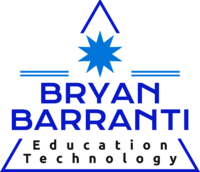As I work through my Master’s research, I’ve realized it makes more sense to focus specifically on English Language Learners (ELLs) rather than trying to address the broader category of diverse learners. This decision comes from my experiences in the classroom with the growing number of ELLs and my growing understanding of the unique challenges ELL students face, particularly in hands-on courses like woodworking.
When I started this process, I aimed to address the needs of all students with diverse learning backgrounds. But as I’ve looked deeper into frameworks like Universal Design for Learning (UDL) and Technology-Integrated Learning (TIL), I’ve seen how ELL students often deal with challenges that go beyond just learning a new language. They also need support to navigate cultural differences and understand project instructions, all while adapting to the very physical, skills-based learning environment of my woodworking classroom.
In my woodworking classes, I’ve found that creating projects with personal and cultural connections helps bridge some of these gaps. For example, when students design their own projects, I encourage them to include symbols or patterns that are meaningful to them. It’s amazing to see how this opens up opportunities for ELL students to share their stories and feel more connected to what they’re making.
I’m also incorporating TIL to better support ELL students. Platforms like Google Classroom allow me to share digital plans, assessments, and translated resources, making learning more accessible. Translation tools provide another layer of support, helping students understand instructions and project details in their own language. As students gain confidence with these tools, we also explore more advanced technology like CAD software and laser machines, giving them even more ways to engage with their work. These tools aren’t just about making things easier, they create new opportunities for students to learn and grow.
Focusing on ELL students feels like the right path for me. It’s not just about helping them learn woodworking skills, it’s about making sure they feel valued and included. This shift has me thinking more about how to make my classroom a place where all students, no matter their background, can succeed. It’s a challenge I’m excited to keep working on as my research develops.
